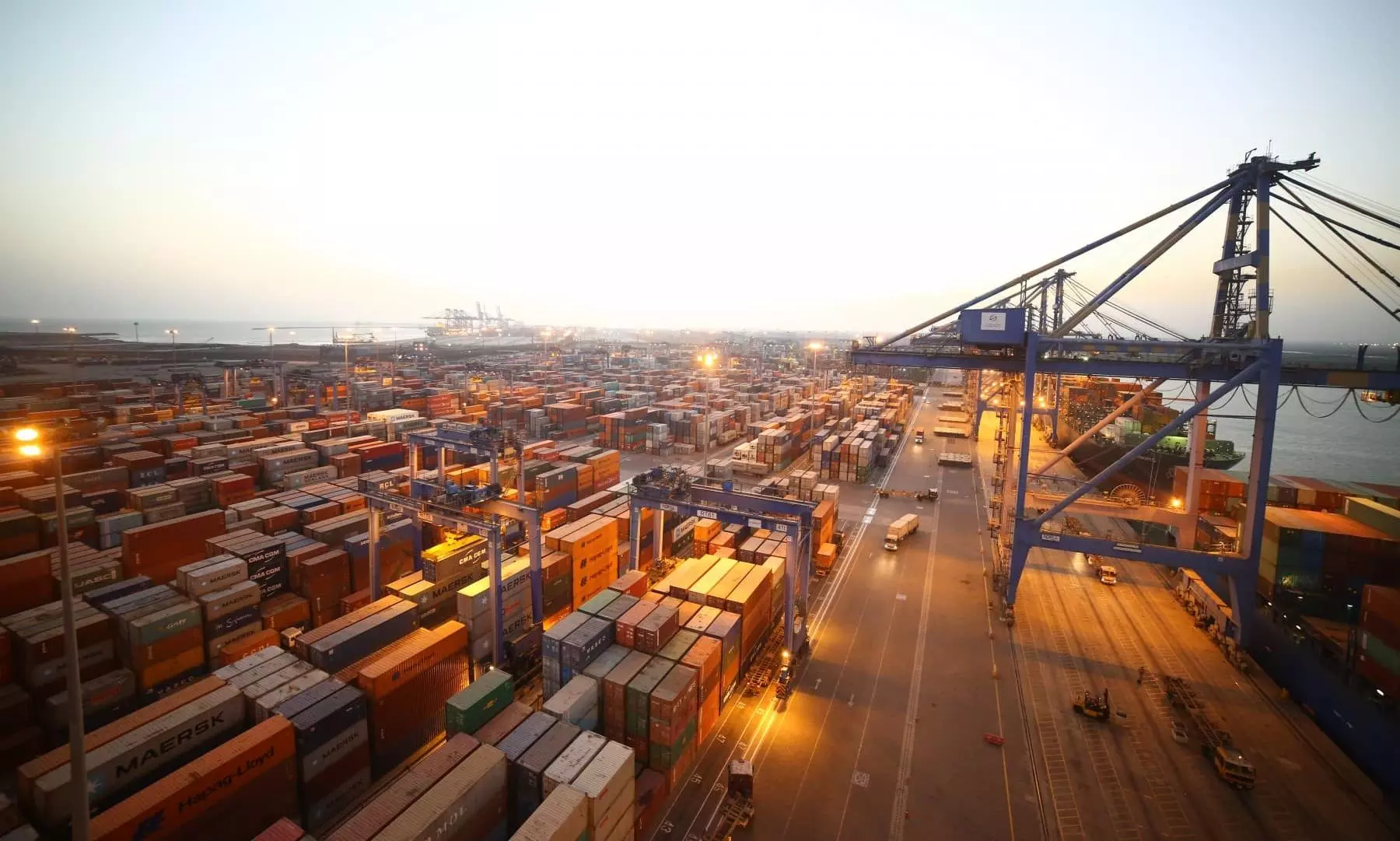Substantial blank sailings likely on Transpacific: Sea-Intelligence
"Shipping lines and cargo owners are adjusting their short-term supply chains for now.."

The current political climate is extremely volatile, and given that tariffs are being imposed and suspended on an almost daily basis, shipping lines and cargo owners are adjusting their short-term supply chains for now and waiting for things to settle down (one way or another) before making longer-term network adjustments, according to the latest update from Sea-Intelligence.
"For the four-week period of weeks 16-19 (this week + the next three weeks), we have looked at the capacity scheduled at different points over the past six weeks to gauge the impact of tariffs. On the Asia-North America West Coast, 1.43 million TEU was scheduled for deployment for weeks 16-19 in week 10. This remained consistent at week 11, and only slightly decreased to 1.40 million by week 12. In week 13, however, scheduled deployed capacity for weeks 16-19 dropped by eight percent week/week to 1.29 million TEU, further dropping to 1.37 million TEU by week 15. Overall, this is -12 percent lower than what was scheduled six weeks ago."
On Asia-North America East Coast, scheduled capacity for weeks 16-19 declined from 1.01 million TEU scheduled by week 10 to 867,000 TEU scheduled at week 15, which represents a -14 percent decline across the six-week period, the update added.
"Figure 1 shows the blank sailings impact of the current tariffs on the combined Transpacific trade, i.e. combined across Asia-NAWC and Asia-NAEC. Three weeks ago, “only” 60,000 TEU was scheduled to be blanked for weeks 16-19. This increased to 250,000 TEU in the space of a week as carriers announced a raft of blank sailings in response to the tariffs. Another significant increase came in week 15 with the total blanked capacity for weeks 16-19 increasing to 367,800 TEU."
A similar impact is not seen on the Transatlantic trade where capacity is largely holding steady, especially now considering a 90-day suspension of tariffs has been announced by both the Trump administration and the EU, the update added.
Shipping rates to US continue to be flat
Average spot rates from Far East to the U.S. East Coast and the U.S. West Coast remained flat during April at $3,951 per FEU (40ft container) and $2,910 per FEU, respectively, according to the latest report from Xeneta.
"Average spot rates from Far East to North Europe increased 4.8 percent on April 15 to $2,457 per FEU."
Peter Sand, Chief Analyst, Xeneta says: "We are looking at record-breaking container shipping capacity leaving the Far East for North Europe this week, which means carriers know something is boiling.
"At the same time as record capacity, we are seeing an uptick in spot rates from the Far East to North Europe. This suggests a nervous market but the demand must also be there to put upward pressure on rates.
"The question is whether this record capacity and rate increase is a consequence of the tariff threat if shippers are redirecting goods from the Far East to Europe instead of the U.S. What we can say is that this is usually a slack time of year for container shipping, so an uptick in pressure is likely related to the tariffs in some way."
Sand also highlighted heavy port congestion in North Europe including Antwerp, Le Havre, London Gateway and Hamburg "but the main cause is likely weather, crane maintenance, labour unrest and strikes, rather than tariffs. However, if we are seeing record levels of capacity leaving the Far East this week, there could be carnage by the time these ships arrive in North Europe, if congestion is still high.
"Average transit time from the Far East to North Europe is 55 days; so there could be serious issues on the horizon in June. As we saw in 2024, congestion is toxic for ocean container shipping and can quickly spread across global supply chains."



